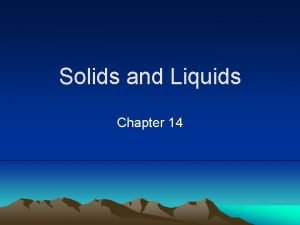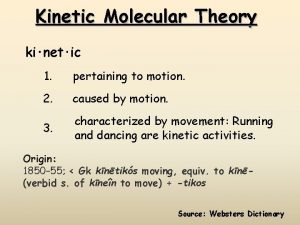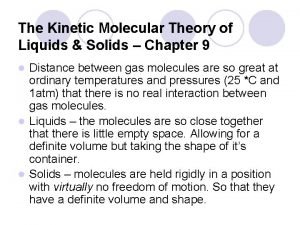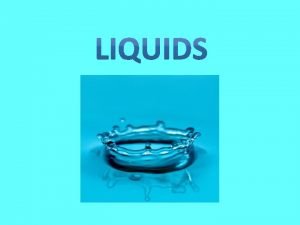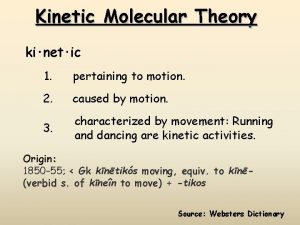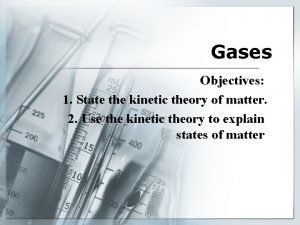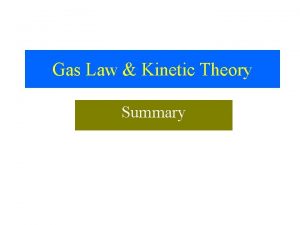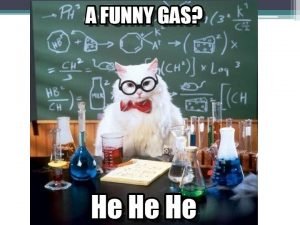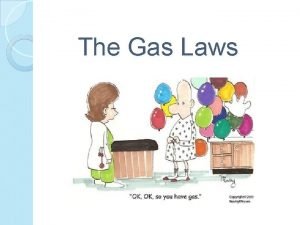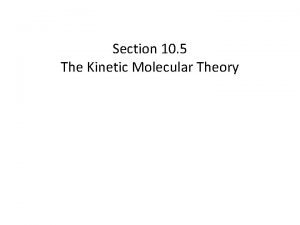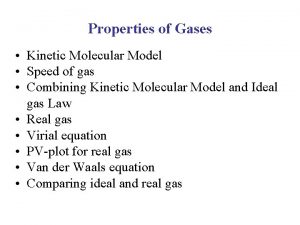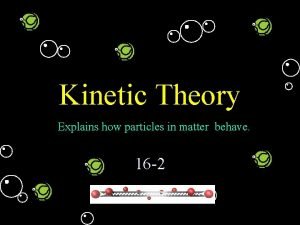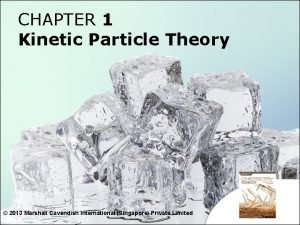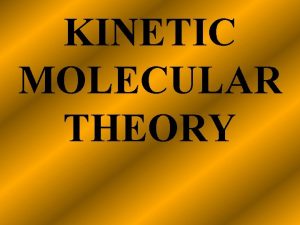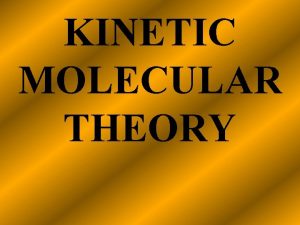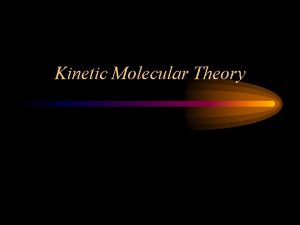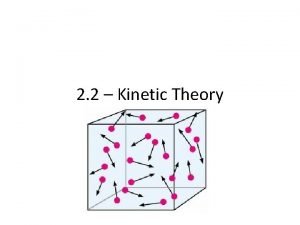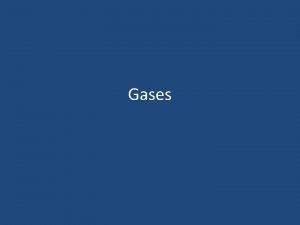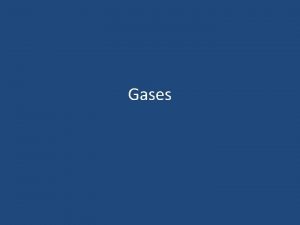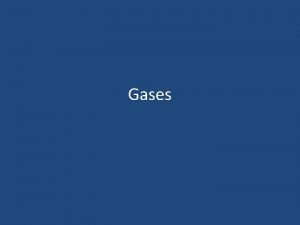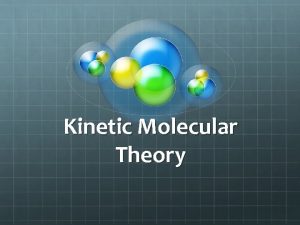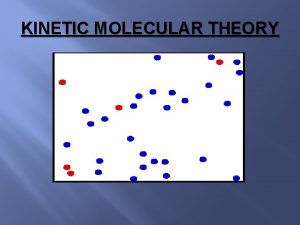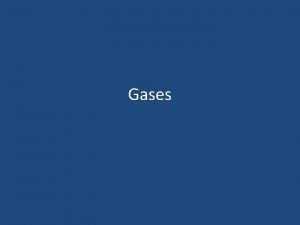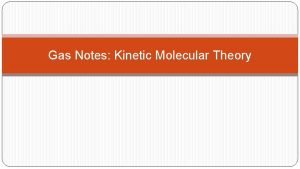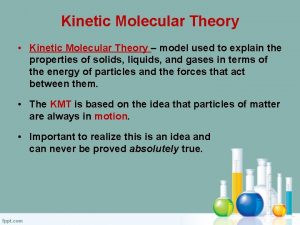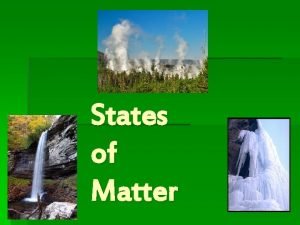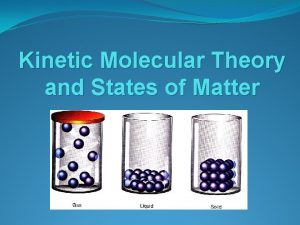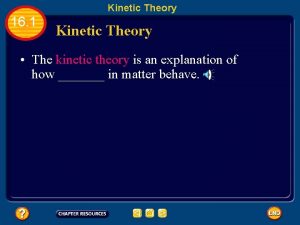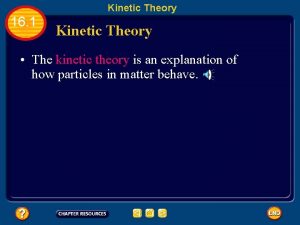Matter III States of Matter Kinetic Molecular Theory



















- Slides: 19

Matter III. States of Matter Kinetic Molecular Theory States of Matter

A. Kinetic Molecular Theory KMT Particles of matter are always in motion. The kinetic energy (speed) of these particles increases as temperature increases.

Kinetic Theory of Matter is made up of particles which are in continual random motion.

STATES OF MATTER SOLIDS • Particles of solids are tightly packed, vibrating about a fixed position. • Solids have a definite shape and a definite volume. Heat

STATES OF MATTER LIQUID Particles of liquids are tightly packed, but are far enough apart to slide over one another. Liquids have an indefinite shape and a definite volume. Heat

STATES OF MATTER GAS Particles of gases are very far apart and move freely. Gases have an indefinite shape and an indefinite volume. Heat

But what happens if you raise the temperature to super-high levels… between 1000°C and 1, 000, 000°C ? Will everything just be a gas?

STATES OF MATTER PLASMA A plasma is an ionized gas. A plasma is a very good conductor of electricity and is affected by magnetic fields. Plasmas, like gases • have an indefinite shape and an indefinite volume.

B. Four States of Matter Solids very low KE - particles vibrate but can’t move around fixed shape fixed volume

B. Four States of Matter Liquids low KE - particles can move around but are still close together variable shape fixed volume

B. Four States of Matter Gases high KE - particles can separate and move throughout container variable shape variable volume

B. Four States of Matter Plasma very high KE - particles collide with enough energy to break into charged particles (+/-) gas-like, variable shape & volume stars, fluorescent light bulbs, CRTs

Some places where plasmas are found… 1. Flames

2. Lightning

3. Aurora (Northern Lights)

The Sun is an example of a star in its plasma state

STATES OF MATTER SOLID Tightly packed, in a regular pattern Vibrate, but do not move from place to place LIQUID Close together with no regular arrangement. Vibrate, move about, and slide past each other GAS Well separated with no regular arrangement. Vibrate and move freely at high speeds PLASMA Has no definite volume or shape and is composed of electrical charged particles

C. Thermal Expansion Most matter expands when heated & contracts when cooled. Temp causes KE. Particles collide with more force & spread out.

D. Phase Changes
 The kinetic theory of matter states that
The kinetic theory of matter states that Kinetic molecular theory of liquids and solids
Kinetic molecular theory of liquids and solids Kinetic molecular model of gases
Kinetic molecular model of gases Kinetic molecular theory volume
Kinetic molecular theory volume Adhesive force
Adhesive force Kinetic molecular theory of liquids
Kinetic molecular theory of liquids Kinetic energy molecular theory
Kinetic energy molecular theory Kinetic theory def
Kinetic theory def Theory vs hypothesis
Theory vs hypothesis Charles law in terms of kinetic molecular theory
Charles law in terms of kinetic molecular theory Postulate of kinetic theory
Postulate of kinetic theory Kenitic molecular theory
Kenitic molecular theory Write postulates of kinetic theory of gases
Write postulates of kinetic theory of gases Pv=1/3nmc^2
Pv=1/3nmc^2 Kinetic molecular theory
Kinetic molecular theory Tenets of kinetic molecular theory
Tenets of kinetic molecular theory Kinetic theory of matter definition
Kinetic theory of matter definition Kinetic theory of matter
Kinetic theory of matter An explanation of how particles in matter behave
An explanation of how particles in matter behave Kinetic particle theory o level questions
Kinetic particle theory o level questions

